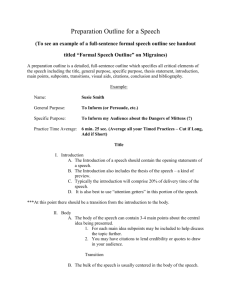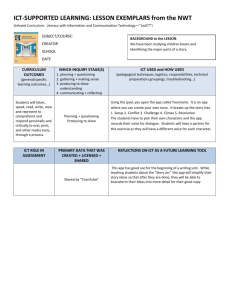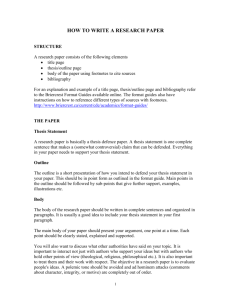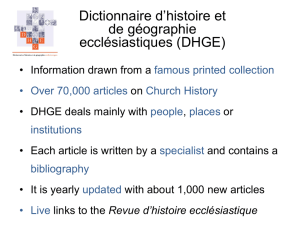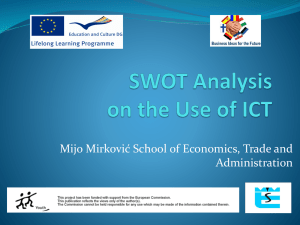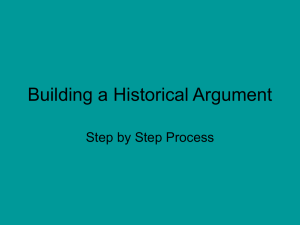Resource H – i Approaching the literature review (dissertation)
advertisement
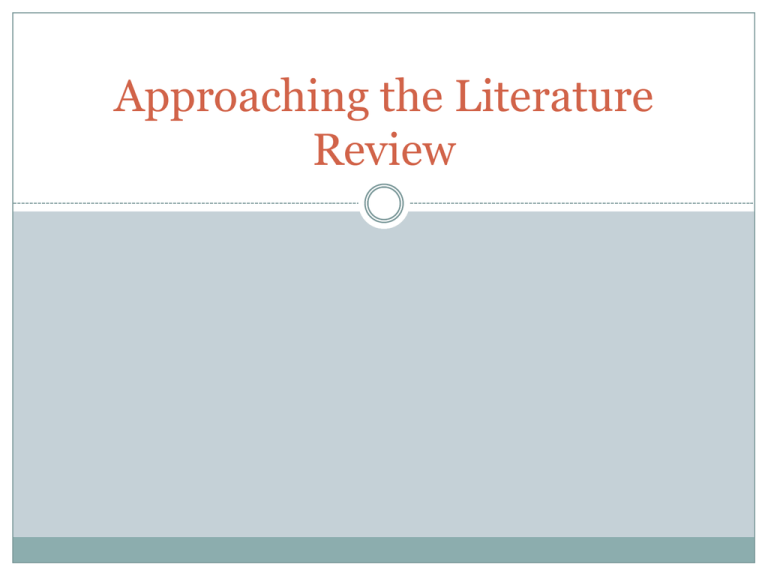
Approaching the Literature Review ‘A researcher cannot perform significant research without first understanding the literature in the field’ (Boote and Beile, 2005: 3) Approaching the literature review To complete a literature review requires planning, time, reading, writing, drafting, reflection and editing. A successful literature review has a firm idea of the research problem and an understanding of the research framework/paradigm. In order to refine the research problem, conduct preliminary research which will help you narrow your focus and identity key search terms. Approaching the literature review You are expected to ‘place’ your research in the existing academic literature. Simply describing the literature should be avoided. A critical and analytical judgement which demonstrates how/where your work is best placed as well as work that needs developing is essential. Your work should contribute to existing literature in the field. Ensure consideration is given to the methodological and/or theoretical arguments that inform the literature. Be aware of how research paradigms influence the research. Boolean operators Command Purpose AND OR NOT Looks for articles that include all search terms/keywords Looks for articles that include any of the search terms Excludes articles that include specific keyword What is a literature review? It is not an annotated bibliography Develops an argument by summarising (present key information) and synthesis (reorganisation of information) Distinguishes what has already been done and identifies what needs to be done (Hart, 1998) Key developments in the literature (research landscape) How your work connects with current literature needs to be explicit. framework where new findings are compared to previous findings presented in the literature. This takes place in the discussion section Reading What are the relevant sources that you need? Produce a bibliography which will also act as your reading list. Read, read and read some more! Once you have familiarised yourself with the literature, annotate the bibliography. Annotation is a brief overview/summary of the main point/s of each article. Once an overview of the literature has been obtained, develop your focus. The annotation provides you with a list of sources which needs to be turned into a review of the literature organised around ideas. PQRS Preview Questions Reading Preliminary reading (reading abstract, introduction, 1st sentence of each paragraph and conclusion). Only read thoroughly when you are certain the information is relevant to your research area. What do you need to find out? What are the main questions and conclusions of the paper? Are there possible alternative interpretations of the literature? Be Active! Search for answers to the questions. Be ACE Summarise Take selective notes. Use colour and space to organise (note template) Question the readings Questions to ask when grouping sources What are the shared themes, ideas or issues presented? Does there appear to be a gap missing? What trends/developments are evident in the literature? What theoretical approaches have you identified? Thesis statement Developing the thesis statement Example: ‘Companies claim to act in a corporately socially responsible manner despite continuing to engage in business that is fundamentally unsustainable’. ‘Information and Communication Technology allows employees to be constantly tethered to their ICT’. Research Questions Identify three questions that your literature will answer. Key topics will be discussed in these questions. What questions do you need to ask in order to obtain the answers that will enable you to respond to the research problem? Example Thesis statement ‘Information and Communication Technology allows employees to be constantly tethered to their ICT’. Questions: What are the intended consequences of ICT use? What are the unintended consequences of ICT use? How does ICT use allow employers to expropriate from employees? Common approaches to organising a Lit review Chronological: depending on the nature of your literature and development of ideas, a chronological approach will present the development of a key trend and/or progressions and changes in practices. Thematic/conceptual: Time is not a factor here. The review of the literature will be around particular topics/issues/theories. Methodological: This review focuses on the methodological or paradigmatic approaches to your material. Example structure Introduction Thesis statement Purpose of the review and concise overview of the research problem Outlines the organisational pattern of the review/sequence of themes covered and the scope of the research Limits, inclusion/exclusion criteria should be clearly outlined. Body Summarisation and Synthesis (discusses and presents findings from the literature) Ensure continuity by summarising each theme/section and present how it relates to following section. Conclusion Concise summary of the findings Presents a rationale for conducting future research Identified gaps in the literature should lead logically onto the purpose of the proposed study (Cronin, Ryan and Coughlan, 2008) Common Mistakes to avoid Failure to link the findings of the literature review to your own study Does not start the reading process early and fails to identify suitable sources Does not refer to primary sources (lazy research) Absence of criticality and accepting findings as valid without questioning all aspects of the research design Produces an annotated bibliography Bibliography Boote, D. N., and P Beile. (2005). Scholars before researchers: on the centrality of the dissertation literature review in research preparation. Educational Researcher, 34(6), 3-15. Cronin, P., Ryan, F and M Coughlan. (2008) Undertaking a literature review: a step-by-step approach. British Journal of Nursing, 17(1), 38-43. Hart, C. (1998). Doing a literature review: Releasing the social science research imagination. London, Sage.



